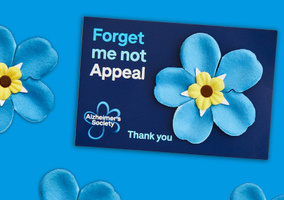Running a small-sized charity that makes a big impact presents a number of unique challenges in comparison to running a large charity. We are really mindful of our spending and resources, and there is no doubt that leveraging the press is one of the best ways to build awareness of your charity and its goals.
However, as a small charity you might feel that you aren’t big enough to be featured in the press. The good news is this is absolutely not the case. Whatever your size, the media is a good tool for building a nationwide presence and with the right strategy, you can secure all kinds of features, even the huge ones that you see the top players getting.
At the Head and Neck Cancer Foundation, we have kept a strong focus on our press strategy for years. This is because for any charity, raising your profile with the public will bolster your main goals of building awareness, gaining more supporters and ultimately increasing donations. We’ve learnt a lot about what works and what doesn’t.
Work smarter
Before you get started, it’s important to understand what barriers you might face as a smaller charity. First, the press is likely to favour well known sources as they are seen as more credible. And second, small charities simply cannot match the huge marketing and PR budgets that larger charities have at their disposal. Thankfully, you can overcome these hurdles by making sure you work smarter, are more targeted with your outreach and offer value to the reader.
Regional newspapers
My first tip for a charity looking to get into the media is to start local. Building a story is all about creating relevance and value for the reader, and regional newspapers will inherently find your organisation more relevant to their audience than the national press. This means they are more likely to cover any story that you are going out with or run a feature on you, such as a charity profile.
The same goes for any events, fundraisers or campaigns that you are running anywhere in the country – the press local to that initiative will likely find the story very relevant. For example, if you have a fundraiser who is taking on a big challenge on the other side of the country, you can target the local press in that area. Regional media is a great way to increase donations towards initiatives such as this, as readers will feel more of a connection towards the story. We have seen massive spikes in fundraiser donations from good-willed readers after using this tactic.
National newspapers
After some initial hits in the regional press, you might start to think about how you can get featured in the national press. Working on the two principles of value and relevance, you need to make sure a story is strong enough to even have a chance at getting picked up. Focusing on value first, you need to evaluate your story to decide if it has national appeal – is it a world-first medical breakthrough or a truly incredible story from a case study? To help you decide this, I recommend reading through articles on similar topics in several national newspapers. If you don’t think you have any truly groundbreaking stories to share, this is where finding relevance comes in. You may have seen that comments from industry experts are often included in articles, and this is exactly what you can do. You need to pay attention to the news and world events to identify opportunities for you to comment on. For example, if you were a charity for children’s mental health, then as soon as children began learning from home during the pandemic, the relevance was created for you to be quoted in an article talking about the impact on children.
Broadcast press
You can apply much of what you have learnt about regional press and national press to broadcast media. However, there are slightly more requirements that you have to meet to be featured on the TV or radio. For TV, a story feature almost always needs a very visually appealing angle and a spokesperson who is willing to be interviewed. You can also secure smaller interviews surrounding a larger topic using the concept of reactive commentary that I mentioned above.
To be featured on the radio, you will need an intriguing story that has lots of room for discussion around the subject. And again, your region’s variants of radio stations and television news channels will find regional stories relevant to their audience.
Lifestyle magazines
Weekly and monthly lifestyle magazines are more feature-heavy as opposed to being led by news stories. They are the perfect platform for you to bring to light case studies – intriguing real-life stories that ultimately convey the messaging of your charity. For example, we run countless articles covering cancer patients with miraculous stories, which do an amazing job of connecting with readers while raising awareness of the charity and its messaging. Some magazines will run interviews with, or articles attributed to your spokespeople. These are both great vehicles to discuss your charity’s key messaging and spread awareness of an issue.
The important thing when pitching for any of these opportunities is to find a link between your small charity and the magazine’s audience. By thinking laterally, you can also spot opportunities to be featured in lifestyle magazines that you would otherwise never be in. For example, if a mental health charity’s CEO is a keen cyclist, maybe they can write an article for a mountain-biking magazine on the benefits of the sport for mental health, while still covering the underlying messages of the charity.
Trade press
I’ve covered the consumer press, but another area of the media that you should target to build your profile is trade press. These are publications read by professionals in an industry. Every charity will also have trade press unique to its sector and securing a story is all about offering value to professionals within that industry. In addition to news stories and comments, many trade titles will take thought-leadership articles. These articles need to offer value to the reader and provoke thought surrounding a topic within the industry. As a small charity in any sector, your experience will greatly differ from a larger organisation so you need to consider what advice or opinion you can offer that is fresh and hasn’t been used before.
Getting the most value
Next, you should think about how you can extract even more value out of your exposure. By using content in a smart way, you can secure numerous hits for the price of one. For example, can you cut up the content of a thought leadership article and turn it into 10 social media posts, or a blog post? Or perhaps you could transcribe a broadcast interview and turn it into a written article. There are countless ways that you can utilise a great hit with the press to bring more value to your charity, and by working intelligently you can save time and resources while getting closer to the levels of exposure that the larger charities see.
Ultimately, the size of your charity is only one factor and by producing well-curated stories and targeting the right areas of the press, you can garner impressive levels of exposure.
Michelle Vickers is CEO of the Head and Neck Cancer Foundation
Related articles












